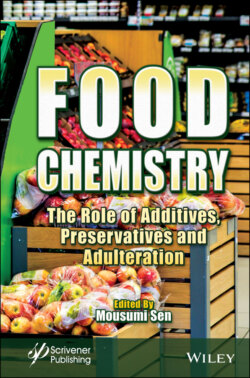Читать книгу Food Chemistry - Группа авторов - Страница 39
1.8 Antioxidants
ОглавлениеAntioxidants usage in the field of food preservatives to save food from degradation has proved to be very effective. The oxidation of food is responsible by the two factors: oxygen and sunlight; so, the preservation procedure involves keeping food away from the contact of air and sun, keeping food in the dark and sealed container or maybe when required sealing it with the help of wax and cucumber where there is no chance for the food to get close or comes in the contact with the sunlight or oxygen but it does have one advantage as oxygen is the primary source for the respiration of plants so the plant products present there smells really bad and also the color of the products sometimes change. In addition, 8% oxygen is contained in the packaging of fresh fruits and vegetables. Antioxidants play an important part as preservatives, It helps to prevent the spoilage by fungi and bacteria [88].
Unsaturated fats are the most widely recognized atoms attacked by the process “oxidation” that makes them rancid. Oxidized lipids are regularly stained and result in displeasing tastes, for example, metallic or sulfurous flavors. It is essential to keep away the food from oxidation. These kinds of food are hardly preserved with the help of drying, and they are usually preserved with the help of salting/pickling, smoking, and fermenting. Before air drying the fruits which are less fatty foods are sprayed with antioxidants (sulfurous). Metals act as a catalysis in the process of oxidation, so it is better if fat oils like butter should not be kept in the Al foil or in any other metal container. Olive oil are halfway shielded from oxidation by their inherent antioxidant property but rest is sensitive toward photooxidation. Antioxidant additives are additionally added to fat based beautifying agents, for example, lipstick and lotions to forestall rancidity.
